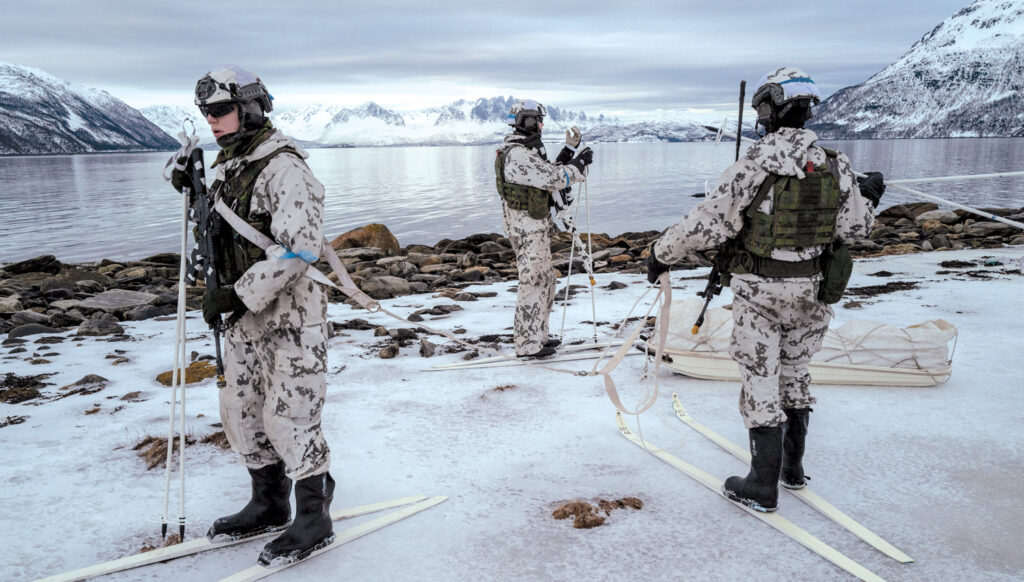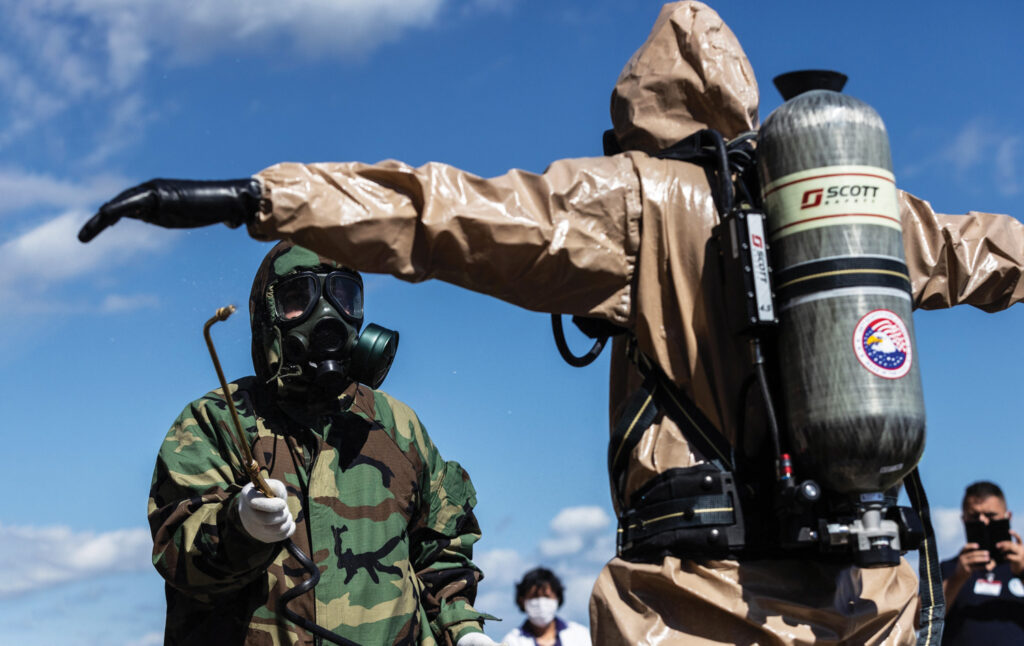
A synergistic relationship exists between defense agencies and the textile industry. Small-to-medium enterprises enjoy support from the defense sector through funding mechanisms such as the Small Business Innovation Research and Small Business Technology Transfer programs. Federal agencies, including the National Science Foundation and the U.S. Department of Defense, support research in fibrous materials by funding major initiatives, such as has been the case with the Advanced Functional Fabrics of America. The development of technologies such as melt blowing and electrospinning—important components of PPE and filters—was supported by the U.S. Department of Defense.
The U.S. is not alone. For example, India’s Defense Research Development Organization is funding a project on smart textiles embedded with graphene for Aloha Technology.
Sourcing and investing
Given the importance of preparedness for current and future threats, continuous investment in research and manufacturing must be enhanced. Speaking at the North Atlantic Alliance forum of NATO in July, President Joe Biden noted that NATO members are expanding their industrial bases and capacity. Highlighting the U.S. government’s investment of about $30 billion in defense production in 35 states, Biden says that members are developing plans for domestic production so that the defense sector is competitive.
Although timelines vary among members, many NATO countries are aiming to spend about 2% of their gross domestic product on defense. As of this year, 23 out of 32 members will reach this target. This spending level will have an impact by generating jobs in developed economies.
While this investment will benefit the defense sector the most, allied sectors such as technical textiles and infrastructure will also get needed boosts. In support of these initiatives, Tony Fragnito, president and CEO of the Association of the Nonwoven Fabrics Industry (INDA) says, “INDA believes there are positive cost, performance and national security implications to sourcing engineered materials, and specifically nonwoven compositions, from North American sources.”
“Lab to life-saving” is the motto of Fredericksburg, Va.-based First Line Technology, which has been involved with government and academia in developing products for military and local agencies. “We at First Line have done this successfully a couple of times with FiberTect [for] dry decontamination, Dahlgren Decon [for] reactive decontamination and recently a cooling system called Arm Immersion Cooling System by the U.S. Army,” says Amit Kapoor, president of First Line Technology. [Editor’s disclosure note: FiberTect was developed in the author’s lab at Texas Tech University.]
Bengaluru, India-based Resil Chemicals and its subsidiary N9 World Technology have developed N9 Pure Silver, which is a patented, novel silver product developed through collaboration with research institutes. According to Resil, military uniforms and jackets treated with N9 Pure Silver keep odor-causing bacteria at bay, providing better hygiene and comfort for the wearer.

At the intersection of defense and advanced textiles, there are opportunities to use sustainable raw materials and processes. To move in this direction, more investments in research on advanced materials used in defense and industrial products are needed. Sustainable materials such as cotton and regenerated fibers have penetrated products such as base layers and battle dress garments. Cost-effective ways of adding necessary functionality, such as breaking down toxins, offer a wider scope but will require multidisciplinary approaches.
Advantages and concerns
Collaboration with various defense and government agencies is a win-win process offering both industry participants and government entities the means to get maximum output from investments.
“Collaboration with defense and other government agencies helps spur innovation for product development for commercial applications. The government has always been a great innovation partner for industry through cooperative research and development agreements and commercialization licensing agreements,” says Kapoor. “It’s not as easy as just finding a champion in the government who thinks your product is a good idea. There needs to be a requirement or a need for your respective product.”
To enable more collaboration and contracts, Fragnito says, “It is critical to be prepared to educate government agencies on the unique attributes and values that nonwoven engineered materials provide.” However, given the complexities involved with government bids, Fragnito adds, “I wish, but do not expect, federal procurement could be more focused on partnering with industry to provide solutions which foster innovation and support reliable demand.
“The reality is that federal procurement is a challenging ‘game’ for many in our industry since the focus is often on price and exclusive awards versus a more holistic approach to supporting industry and supply chains.”
Narasimhan Srinivasan, Ph.D., president of Chennai, India-based Asthagiri Herbal Research Foundation, which develops chemistry formulations for advanced materials, says that collaborations and funding requests with government agencies will be successful if the companies comply with procedural requirements in the process. But the project and consumer costs are important.
“In spite of making a safe product, I am unable to entice the consumer to the premium price,” Srinivasan says.

This view impacts the advanced textiles industry, as this sector is dependent on R&D, which involves added costs. Its smaller market size compared to commodity textiles also contributes.
Drawing on his experience with Indian defense agencies, Ganesh Srinivasan, CEO of Resil Chemicals says, “Commercializing new textile products in the defense sector faces several challenges. Developing new specifications for textile products with advanced functionalities is often not rewarding for private companies, as these specifications are eventually opened for competition. This makes it difficult for private innovators to recover R&D time and costs.”
Moving forward
Based on the outcomes from the NATO summit, it is evident that collaboration, collective strength and sharing of resources among allies are valued in the defense arena. The advanced textiles sector can benefit from the co-development and coproduction strategies followed by the defense sector to speed up innovation and manufacturing while reducing costs.
Effective communication happens—and innovations can get to market more quickly—when active engagement among industry, academia and research organizations is encouraged.
Ganesh Srinivasan highlights the importance of engaging with stakeholders to move the industry forward, saying, “Specialized training, leveraging government schemes and active participation in industry associations build strong networks. Ensuring high quality standards and effective communication of product benefits, along with showcasing successful collaborations, will foster mutual growth and success.”
Fragnito says, “Collaboration with academia is critical for focusing research efforts and dissemination of the basic research findings in the material sciences.”
In the words of U.S. Secretary of Defense Lloyd Austin III, delivered at the NATO summit, “As a soldier, the last thing that you want to do is to fight alone.”
Seshadri Ramkumar, Ph.D., is a professor in the Department of Environmental Toxicology and the Institute of Environmental and Human Health at Texas Tech University.
 TEXTILES.ORG
TEXTILES.ORG


